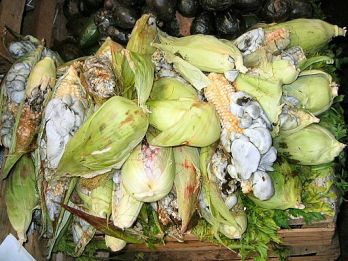Boil smut of maize
Boil smut, also called common smut, is a disease caused by the fungus Ustilago maydis, affecting corn and maize.
Background
Boil smut was first recorded in Bathurst NSW in 1911, and recurred sporadically until 1940, when quarantine restrictions prevented maize being grown on affected properties.
There were no further outbreaks until 1982, when it was widespread in north-eastern NSW and in south-eastern Queensland. In these states, boil smut has not caused serious economic loss in infected areas, although significant losses have occurred in individual fields.
Since 1987, Queensland has been considered an infected area after the repeal of the state’s boil smut legislation.
It has not been found in South Australia or Western Australia. Host material is prohibited from entering SA, unless it complies with Condition 15 of the Plant Quarantine Standard.
Impacts
The disease causes unsightly disfigurement of corn and maize plants, but the affected kernels are still edible and considered a Mexican delicacy.
Boil smut is difficult to contain and can spread great distances by:
- wind – spores can travel several hundred kilometres
- water – especially by river and flood
- seed-borne spores
- contaminated machinery, clothes, shoes or motor vehicles
- movement of wildlife, livestock and manures
- movement of infected plant materials, such as products used for stock fodder.
No corn varieties or hybrids are completely resistant to the disease, but there is good field resistance in maize. Sweet corn is more susceptible to boil smut, as well as popcorn, and the related grass, teosinte (Zea mexicana).
Management
Seed treatment can be used to reduce spread through contaminated seed.
There are no fungicidal control measures for preventing field infections or eradicating widespread outbreaks. Farmers have learnt to live with the disease using appropriate hygiene to reduce the effects.
Identification
Boil smut manifests as sooty masses of teliospores on the above-ground sections of infected plants. Tumour-like galls, varying from less than 1cm to over 30cm, appear on the:
- ears
- tassels
- stalks
- nodal shoots
- mid-ribs of leaves.
Occasionally, galls develop beneath the soil surface in young plants.
Lifecycle
A single smut gall of average size may contain more than 200 billion teliospores. These are the primary source of infection and can live in the soil for up to 16 years.


